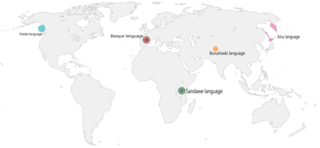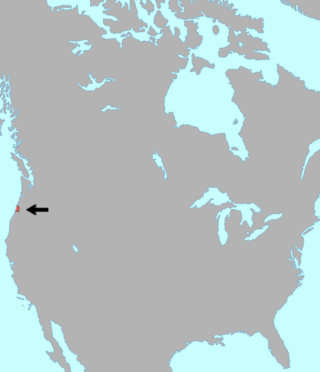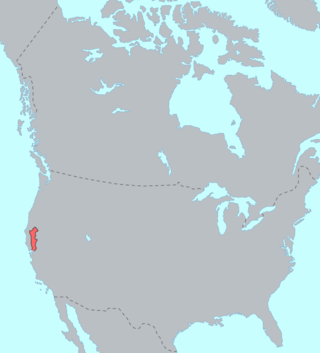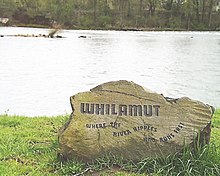
A language isolate is a language that has no demonstrable genetic relationship with another language. Basque in Europe, Ainu in Asia, Sandawe in Africa, Haida and Zuni in North America, Kanoê in South America, and Tiwi in Australia are all examples of language isolates. The exact number of language isolates is yet unknown due to insufficient data on several languages.

Penutian is a proposed grouping of language families that includes many Native American languages of western North America, predominantly spoken at one time in British Columbia, Washington, Oregon, and California. The existence of a Penutian stock or phylum has been the subject of debate among specialists. Even the unity of some of its component families has been disputed. Some of the problems in the comparative study of languages within the phylum are the result of their early extinction and limited documentation.

Amerind is a hypothetical higher-level language family proposed by Joseph Greenberg in 1960 and elaborated by his student Merritt Ruhlen. Greenberg proposed that all of the indigenous languages of the Americas belong to one of three language families, the previously established Eskimo–Aleut and Na–Dene, and with everything else—otherwise classified by specialists as belonging to dozens of independent families—as Amerind. Due to a large number of methodological flaws in the 1987 book Language in the Americas, the relationships he proposed between these languages have been rejected by the majority of historical linguists as spurious.

Washo is an endangered Native American language isolate spoken by the Washo on the California–Nevada border in the drainages of the Truckee and Carson Rivers, especially around Lake Tahoe. While there are only 20 elderly native speakers of Washo, since 1994 there has been a small immersion school that has produced a number of moderately fluent younger speakers. The immersion school has since closed its doors and the language program now operates through the Cultural Resource Department for the Washoe Tribe. The language is still very much endangered; however, there has been a renaissance in the language revitalization movement as many of the students who attended the original immersion school have become teachers.

The Kalapuya are a Native American people, which had eight independent groups speaking three mutually intelligible dialects. The Kalapuya tribes' traditional homelands were the Willamette Valley of present-day western Oregon in the United States, an area bounded by the Cascade Range to the east, the Oregon Coast Range at the west, the Columbia River at the north, to the Calapooya Mountains of the Umpqua River at the south.
Yoncalla is an extinct Kalapuyan language once spoken in southwest Oregon in the United States. In the 19th century it was spoken by the Yoncalla band of the Kalapuya people in the Umpqua River valley. It is closely related to Central Kalapuya and Northern Kalapuya, spoken in the Willamette Valley to the north.
Sahaptian is a two-language branch of the Plateau Penutian family spoken by Native American peoples in the Columbia Plateau region of Washington, Oregon, and Idaho in the northwestern United States.

The Coosan language family consists of two languages spoken along the southern Oregon coast. Both languages are now extinct.

Alsea or Alsean was two closely related speech varieties spoken along the central Oregon coast until the early 1950s. They are sometimes taken to be different languages, but it is difficult to be sure given the poor state of attestation; Mithun believes they were probably dialects of a single language.

Utian is a family of Indigenous languages spoken in Northern California, United States. The Miwok and Ohlone peoples both spoke languages of the Utian language family. It has recently been argued that the Utian languages and Yokuts languages are sub-families of the Yok-Utian language family. Utian and Yokutsan have traditionally been considered part of the Penutian language phylum.

The Yuman–Cochimí languages are a family of languages spoken in Baja California, northern Sonora, southern California, and western Arizona. Cochimí is no longer spoken as of the late 18th century, and most other Yuman languages are threatened.

Plateau Penutian is a family of languages spoken in northern California, reaching through central-western Oregon to northern Washington and central-northern Idaho.

Wintuan is a family of languages spoken in the Sacramento Valley of central Northern California.

Maiduan is a small endangered language family of northeastern California.

The Yuki–Wappo or Yukian languages are a small language family of western California consisting of two distantly related languages, both now extinct.

Takelma is the language that was spoken by the Latgawa and Takelma peoples and the Cow Creek band of Upper Umpqua, in Oregon, USA. The language was extensively described by the German-American linguist Edward Sapir in his graduate thesis, The Takelma Language of Southwestern Oregon (1912). Sapir’s grammar together with his Takelma Texts (1909) are the main sources of information on the language. Both are based on work carried out in 1906 with language consultant Frances Johnson, who lived on to become the last surviving fluent speaker. In 1934, with her death at the age of 99, the language became extinct. An English-Takelma dictionary is currently being created on the basis of printed sources with the aim of reviving the language.
The Plains Algonquian languages are commonly grouped together as a subgroup of the larger Algonquian family, itself a member of the Algic family. Though the grouping is often encountered in the literature, it is an areal grouping rather than a genetic one. In other words, the languages are grouped together because they were spoken near one another, not because they are more closely related to one another than to any other Algonquian language. Most studies indicate that within the Algonquian family, only Eastern Algonquian constitutes a separate genetic subgroup.
Latgawa are Native American people who lived in the Rogue Valley of interior southwest Oregon. In their own language "Latgawa" /latʰka:wàʔ/ means "those living in the uplands," though they were also known as the Walumskni by the neighboring Klamath tribe.
Marie-Lucie Tarpent is a French-born Canadian linguist, formerly an associate professor of linguistics and French at Mount Saint Vincent University [MSVU], Halifax, Nova Scotia, Canada. She is known for her descriptive work on the Nisga'a language, a member of the Tsimshianic language family, and for her proof of the affiliation of the Tsimshianic languages to the Penutian language group.
The Takelma–Kalapuyan languages are a proposed small language family that comprises the Kalapuyan languages and Takelma, which were formerly spoken in the Willamette Valley and the Rogue Valley in Oregon.
















